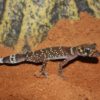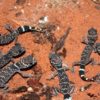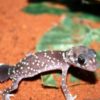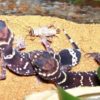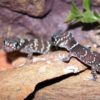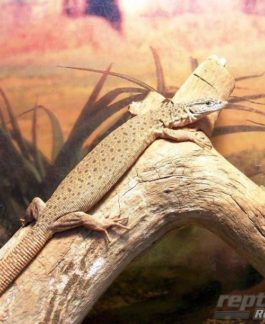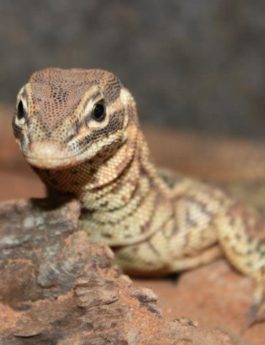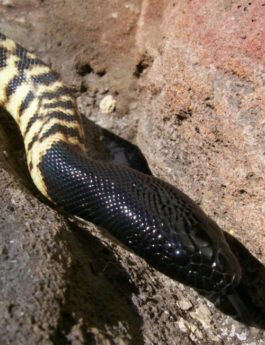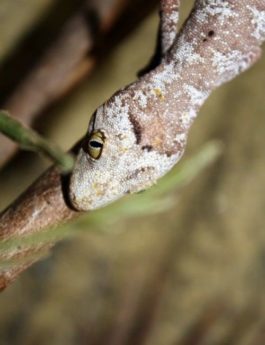| Common Name: | Thick Tailed Gecko |
| Scientific Name: | Underwoodisaurus milii |
| Family: | Carphodactylidae |
| Genus: | Underwoodisaurus |
| Status: | Secure – Category 3 |
| Size: | SVL 102 mm |
Thick Tailed Gecko’s have large deep heads, plump tails and slender limbs, digits short, clawed and padless, tails squarish to carrot shaped, original tail black with 5 – 6 white bands, tail-tip tapering, regenerated tail, heart shape, with little pattern. Scales are small and granular, pink to dark purplish brown with many cream to yellow spots each centred on a tubercle (bump). Terrestrial, sheltering by day under rocks, logs or in burrows. When threatened they raise their bodies and lunge at their aggressor, uttering a loud wheezing bark.
Shelters in hollow limbs, beneath loose bark, on shaded branches or foliage of trees and shrubs, and among stems and leaves of grass trees (Xanthorrhoea) or tussocks of beach spinifex (Spinifex longifolius). Occupies woodlands and heathlands on sandy soils and limestones along lower west coast and off-shore islands from Shark Bay south to Perth. S. s. inornatus extends from the Darling Range along south coast and south-western interior, occupying a broad range of habitats.
Terrarium: Thick-tailed geckos are a ground dwelling gecko, therefore they do not need an enclosure with much height. A terrarium measuring 45x45x30 (WxDxH) is enough room to comfortably house a trio.
Lighting & heating: UVB lighting is not essential to Thick-tailed geckos, however a low 2.0 spectrum fluorescent globe can be used for viewing purposes. Heating can be provided with a heat rock, tile, mat or cord to maintain a ground surface temperature of 32°C in the hot spot. Ambient heat can be provided with an infrared heat globe to maintain a daytime temperature of 30°C in the warm end and 20°C in the cool end, on warmer days you may not need to turn on the heat globe as the ambient temperature of the enclosure may already be high enough.
Furnishings: Naturally, Thick-tailed Geckos shelter under rocks and loose bark, so providing an enclosure with plenty of hide caves in both the hot and cool end is important. Artificial foliage throughout the enclosure will allow the gecko plenty of hiding spots and coverage. Substrate should be red sand kept at the correct moister with some large pieces of loose bark to provide natural hiding spots. A water bowl will need to be positioned in the cool end of the enclosure.
Food in captivity: Thick-tailed Geckos are insectivores, feeding on appropriate sized crickets and woodies. Food items will need to be dusted with calcium and vitamin supplements.
The essentials:
- Terrarium of appropriate size
- Ground heating
- Thermometer
- Water bowl
- Substrate
- Hide caves
- Foliage for shelter
- Calcium and vitamin supplements


